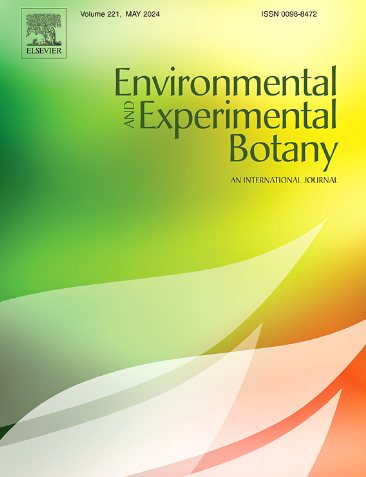脂质组学和转录组学的结合为研究李树根系叶片水分亏缺对脂质代谢的影响提供了新的思路
IF 4.7
2区 生物学
Q2 ENVIRONMENTAL SCIENCES
引用次数: 0
摘要
在李属植物对水分缺乏的反应中,脂质作用的机制尚未阐明。为了研究这些影响,将耐旱砧木(R40)和干旱敏感砧木(R20)分别暴露在丰水(WW)和缺水(WD)条件下。我们结合生理、脂质组学和转录组学分析来阐明砧木叶片和根系在应对干旱时的脂质动态。结果表明,在WD条件下,R40基因型具有较高的气孔导度和光合速率。脂质组学分析表明,两种基因型在叶片上的差异最大。在WD条件下,R40基因型的神经酰胺、不饱和脂肪酸和甘油三酯等脂质积累量较高。此外,通过比较WW和WD条件,我们发现干旱诱导了R20基因型的主要变化。有趣的是,WD减少了积累的化合物的数量,表明脂质重塑与降解有关。脂质相关基因的转录组学分析显示,R20基因型对WD的反应更强,降低了这些转录物的表达。WD诱导R20基因型的脂肪酸生物合成和去饱和减少,而R40基因型的脂肪酸和甘油三酯生物合成相关基因的表达增加。本文章由计算机程序翻译,如有差异,请以英文原文为准。
Integration of lipidomics and transcriptomics provides new insights into lipid metabolism in response to water deficit in Prunus spp. rootstock leaves
The mechanisms underlying the role of lipids in the response to water deficit in Prunus species have not yet been elucidated. To investigate these, a drought-tolerant rootstock (R40) and a drought-sensitive rootstock (R20) were exposed to well-watered (WW) and water deficit (WD) conditions. We combined physiological, lipidomics, and transcriptomics analyses to elucidate lipid dynamics in rootstock leaves and roots when coping drought. Data showed that R40 genotype possessed a higher stomatal conductance and photosynthetic rate under WD conditions. Lipidomic profiling indicated that most of differences were found in leaves between both genotypes. Under WD conditions, R40 genotype showed a higher number of lipids accumulated, such as ceramides, unsaturated fatty acids, and triacylglycerols. Also, when comparing WW and WD conditions, we observed that drought induced major changes in the R20 genotype. Interestingly, WD reduced the number of accumulated compounds, suggesting a lipid remodeling associated with degradation. Transcriptomic analysis of lipid-related genes showed that the R20 genotype were more responsive to WD, decreasing the expression of these transcripts. A decrease in fatty acid biosynthesis and desaturation was induced in the R20 genotype under WD, while the R40 genotype showed an increased expression of genes associated mainly with biosynthesis of fatty acids and triacylglycerol.
求助全文
通过发布文献求助,成功后即可免费获取论文全文。
去求助
来源期刊

Environmental and Experimental Botany
环境科学-环境科学
CiteScore
9.30
自引率
5.30%
发文量
342
审稿时长
26 days
期刊介绍:
Environmental and Experimental Botany (EEB) publishes research papers on the physical, chemical, biological, molecular mechanisms and processes involved in the responses of plants to their environment.
In addition to research papers, the journal includes review articles. Submission is in agreement with the Editors-in-Chief.
The Journal also publishes special issues which are built by invited guest editors and are related to the main themes of EEB.
The areas covered by the Journal include:
(1) Responses of plants to heavy metals and pollutants
(2) Plant/water interactions (salinity, drought, flooding)
(3) Responses of plants to radiations ranging from UV-B to infrared
(4) Plant/atmosphere relations (ozone, CO2 , temperature)
(5) Global change impacts on plant ecophysiology
(6) Biotic interactions involving environmental factors.
 求助内容:
求助内容: 应助结果提醒方式:
应助结果提醒方式:


